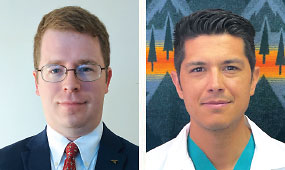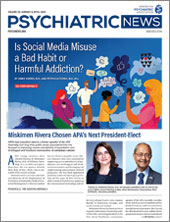What Do American Indian Boarding Schools a Century Ago Have to Do With Dysregulated Children Today?
Abstract
This article is part of a series on mental health issues related to Native Americans, Alaska Natives, Native Hawaiians, and Pacific Islanders.

When one of the authors of this article—George “Bud” Vana, M.D.—first started working as a psychiatrist at the Lummi Tribal Health Center, tribal members frequently mentioned boarding schools as one of the causes of mental health problems in the community and often applied it to the behavior problems he was seeing in young children. He had heard of these schools but had never made these connections to modern-day mental health problems.
The other author of this article—Dakotah Lane, M.D., also found that trauma from boarding schools continues to play out generations later in both medical and mental health issues. However, as he was growing up, he heard only silence when he asked his elders about boarding schools.
From the mid-1800s until the 1990s, as many as 100 American Indian residential schools operated in the United States, up to 80 in Canada, and many in Australia. Their purpose, as Richard Pratt, explained in 1892, was to “Kill the Indian, and save the man.” Pratt was a former general who founded the first off-reservation residential school for American Indians. In practice, these schools did all that they could to prevent American Indian children from using their tribal language and observing cultural practices, instead using Christian Euro-American practices, ideas, and corporal punishment. In addition, there were reports of rampant physical and sexual abuse.
“Many who survived the ordeal returned home changed in unimaginable ways, and their experiences still resonate across the generations,” Deb Haaland, President Joe Biden’s secretary of the interior and a member of the Laguna Pueblo tribe, wrote in a memo earlier this year. Many other tribal members see a direct connection between the residential school experience and what has been termed Indigenous Historical Trauma (IHT), or intergenerational trauma among American Indians.
How does this family and cultural separation and cultural reprogramming at least a generation ago (but sometimes as many as four or five) lead to dysregulated children today? Hillary Weaver, in her book Trauma and Resilience in the Lives of Contemporary Native Americans, summarizes Maria Yellow Horse Braveheart’s work describing IHT and enumerates various mechanisms by which researchers have proposed that this process occurs across generations including epigenetics, adverse childhood experiences, and disrupted parenting skills. The Swinomish Tribal Health Center worked with many partners to write the textbook A Gathering of Wisdoms—Tribal Mental Health: A Cultural Perspective, which describes an interconnected triad of depression, behavioral acting out, and substance use problems—all of which derived from cultural identity problems. A recent systematic review of IHT by Joseph P. Gone and colleagues in the January 2019 American Psychologist shows that these connections are complicated and will benefit from more research.
Dr. Lane has also seen both the trauma and cultural resiliency play out through generations in his own family. His great-grandmother, Dora, refused to speak the Lummi language to her 12 children and spoke only English to help protect them from abuses at boarding schools. She also never gave any of her children traditional Indian names. For the many Pacific Northwest tribes, each Indian name represents a way for their ancestors to protect and guide them as they go through life as well as a way to remember who their ancestors are.
Years later when the threat of boarding schools had receded (1960s), Dr. Lane’s grandmother Nancy (one of Dora’s children) became concerned that her first-born daughter, who was 16 years old at the time, would not be protected when she would be leaving the reservation for a long trip to Europe. Nancy, who never had an Indian name herself, decided her daughter would need an Indian name and provided her daughter with one to help protect her throughout her trip in Europe.
Today all of Nancy’s children and the majority of her grandchildren have Indian names, including Dr. Lane (his name is “Me-Musia”). While the boarding schools clearly achieved some of their objectives by wiping out the Lummi language from the Lane family, the story also serves as a reminder of how powerful cultural traditions can be in healing.
IHT and residential school attendance by distant and close relatives cannot explain all of the dysregulation indigenous children experience, and the boarding schools are not the only governmental injustices committed against tribal communities—that list is long. But a better clinical understanding of the historical cultural wound of the boarding schools has helped both Dr. Lane and Dr. Vana communicate with and be of service to their patients and to understand their individual resilience and their culture’s resilience. ■
References
Gone JP, Hartmann WE, Pomerville A, et al. The Impact of Historical Trauma on Health Outcomes for Indigenous Populations in the USA and Canada: A Systematic Review. Am Psychol. 2019; 74(1) :20-35.
Lane DC, Simmons, J. American Indian Youth Substance Abuse: Community-Driven Interventions. Mt Sinai J Med. 2011; 78(3): 362-72.
Clarke JE, ed.; A Gathering of Wisdoms—Tribal Mental Health: A Cultural Perspective. Swinomish Tribal Community; 1991.
U.S. Department of the Interior. Secretary Haaland Announces Federal Indian Boarding School Initiative. June 23, 2021.
Weaver HN. Trauma and Resilience in the Lives of Contemporary Native Americans. Routledge; 2019.
“The Impact of Historical Trauma on Health Outcomes for Indigenous Populations in the USA and Canada: A Systematic Review” is posted here.



